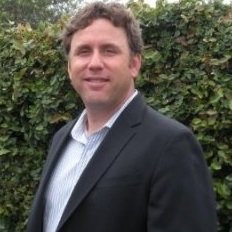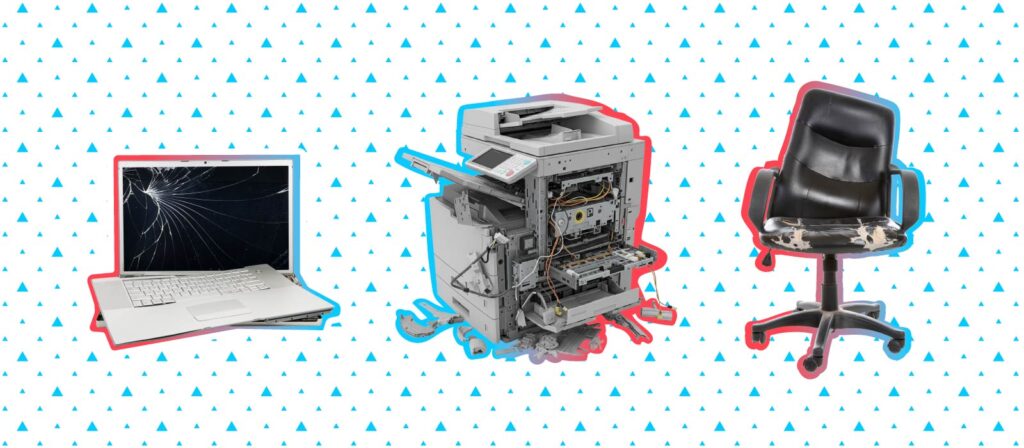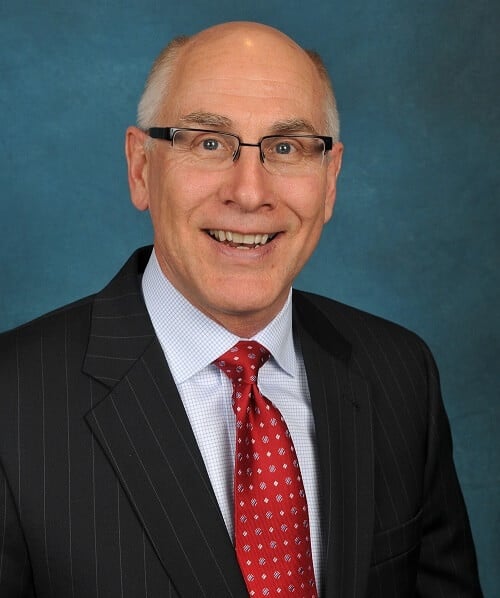 The average building in the US is over 40 years old, resulting in a lack of energy efficiency in most American buildings. To learn more about how to better conserve energy, water and waste in our corporate buildings we sat down with Greg Stevens and Beth Cushing from Green Per Square Foot (PSF).
The average building in the US is over 40 years old, resulting in a lack of energy efficiency in most American buildings. To learn more about how to better conserve energy, water and waste in our corporate buildings we sat down with Greg Stevens and Beth Cushing from Green Per Square Foot (PSF).
Experts in energy efficiency, Greg Stevens, Green PSF Managing Director, has more than 15 years of energy engineering experience and Beth Cushing GreenPSF Director of Operations has a depth of experience in smart grid technology. Greg kicked off our conversation by telling us about his background and how he came to specialize in energy efficiency.
Greg: I’m the Managing Director at GreenPSF, and I also run a separate energy consulting business. I started out in the energy industry nearly 20 years ago as an energy engineer. Now, as an energy consultant I work with businesses to help them create and implement company-wide programs to reduce their energy expenditures. Whether it’s through energy efficiency, onsite generation, energy storage – the idea is to come up with the right mix of solutions that maximizes their bottom line. Over the years I have also directly supported electric and gas utility companies with implementing incentive programs. Back in 2013, I was introduced to GreenPSF and right away I saw how their software platform could enhance the delivery and implementation of utility incentive programs. I started out with developing business opportunities for GreenPSF with my utility clients who I thought could benefit from the platform. This evolved into a bigger role at GreenPSF and I am now working with Beth to deploy our platform for utility companies nationwide.
Beth, on the other hand, was somewhat born into her career in energy.
Beth: I got into energy efficiency through my family business. My background is in smart grid and energy storage, and when I was working on those technologies I spent a lot of time in buildings, similar to what Greg was talking about. So, I really became familiar with the different building systems, how they all work together, and where there are opportunities to use technology or to cut down on energy usage and expense.
The GreenPSF platform allows you to choose your areas of interest, connect with experienced project engineers, and get competitive quotes from qualified solutions providers. Greg and Beth share how the platform is changing the way facilities managers create more sustainable buildings.
Beth: When we started out with GreenPSF, we saw that there are lots of different solutions and technologies available to implement in buildings, but it’s not necessarily very easy for a building manager to figure out what to do, how to do it, and who’s going to get it done. What we’ve done is focus on two things. One is engaging building owners and managers in sustainable practices, and the other is then taking that momentum and turning it into an actual project– deploying technology in buildings in order to save energy, water and waste.
Greg: Our online energy marketplace is designed to make it easier for commercial property owners to identify and implement energy projects. Imbedded in the digital marketplace is our project bidding tool that can assist property owners with soliciting bids for energy projects from qualified contractors in virtually every major market in the US. The idea is to generate accurate project bids for property owners in a timely manner, which helps move along the decision process and prevents projects from stalling out. Over my career I have conducted hundreds of energy audits, and have found that relatively very few economically viable audit recommendations actually get implemented by property owners. The reasons for not moving forward vary – i.e., client isn’t sure how to convert a theoretical idea on paper into real project, client is fearful of making the wrong decision, or the thought of specifying a project and hiring a contractor is just too overwhelming. And I’m talking about projects that have a payback of 3 years or less, which translates to a return-on-investment (ROI) of 33%. In my mind, these are “no brainer” projects that customers should implement right away.
GreenPSF is in a great position to help utility companies increase their audit-to project conversion rates. Utility companies fund energy audits for their customers as a way to uncover energy savings projects to help reach their mandated savings goals. I would guess on average there are probably about 15% of energy audit recommendations that actually turn into projects, which is much too low given the high ROI. That means that 85% of those really good opportunities never move forward. The ability to increase project conversion rates will in turn improve utility program cost-effectiveness.

We asked Greg to tell us a little bit more about his role as an energy consultant. What does a typical engagement with a facilities manager look like in terms of where you would start and the process you would go through?
Greg: At GreenPSF we engage building owners and facility managers in many ways through our software platform to help them see the benefit of making their facilities more efficient. Through these engagement techniques we can enhance utility incentive program delivery and make them more cost-effective to implement. One method of engagement that has been successful in our utility and municipal programs is gamification. We’ve used this approach successfully in half a dozen markets by creating sustainability challenges in order to get property owners and tenants to take action. We saw that gamification was being utilized effectively in other industries, and we have similarly used it to create program awareness and focus on shared goals. For example, our gamification platform is being used to implement the South Bay Cities Green Building Challenge, which is funded by So Cal Edison and So Cal Gas. There are nearly 180 businesses currently enrolled that are becoming more sustainable while having fun doing it. The program also goes beyond energy savings, including water savings, waste reduction and green transportation.
We asked what Greg would say are the biggest changes he has observed in the energy engineering industry have been over the past decade.
Greg: There are more energy efficiency products and energy saving technologies in the market today than at any other time in history. So, the technology is there and the potential to save is there, but what the industry still needs are more tools to help customers identify and implement projects more quickly and on a grander scale. GreenPSF’s digital energy marketplace is right there in the mix. To complement our marketplace, we are partnering with various data analytics firms that can dig deeper into a building’s energy savings potential by conducting virtual audits. These virtual audits are done using software algorithms along with high-level building data and energy usage patterns. Many utility companies are beginning to deploy these types of analytics to assess the energy savings potential across larger geographical areas. With the combination of energy marketplace and data analytics software platforms, we feel we can implement energy projects at a higher rate and more cost-effectively.
One of the biggest challenges these digital approaches face is getting access to customer data. Customer property and usage data are critical to accurately identifying energy saving opportunities. Slowly but surely access to customer data is becoming easier, but the industry still has a long way to go.
What’s the biggest mistake facility managers make in regards to energy efficiency? Indecision and lack of ability to take action based on fear of making the wrong decision.
Greg: In many cases, the biggest failure that I see is a building owner not making a decision when presented with a great savings opportunity. People, in general, are fearful of making the wrong decision, so they’d rather do business as usual than potentially making a risky decision. So, the more risk that you can take out of that decision for them, the more likely that they’re going to make the right decision. What we’re trying to do is help property owners make a decision but also to make a better decision faster.
Beth: Something that I find frustrating, is that there isn’t a lot of great information readily available to a lot of facility managers. Even from negotiating your power supply, to fixing up your weather stripping, there are so many different small things that you can do that are easy and cost effective, but I don’t think there’s a lot of good information. When I’m working with building managers I try to show them that there are a lot of options, and easy ways to make huge impacts on their energy spend.

Beth and Greg share tips to overcome energy efficiency challenges.
Beth: What we’re seeing right now is that there is a lot more opportunity to choose where you buy your electricity. So, you can choose sources, from where it’s made, how it’s made, if it’s clean energy, coal, nuclear. And that’s one thing that’s very easy to do, that’s low risk and saves a lot of money and is better for the environment, and it doesn’t affect daily operations. So, that’s one example of something that you can do that’s very low risk and high impact.
Greg: As I mentioned earlier, there are many industry wide challenges to overcome – i.e., overwhelming amounts of product information, fear of making the wrong decision, etc. Many times clients will get inundated with calls and marketing materials from various manufacturers, vendors or contractors trying to sell products without any regard to what the client actually needs. Not to say that the product they’re pitching doesn’t work, but is it the best fit for the client?
There are also perceptions that energy efficiency must overcome to become more mainstream than it is today. Solar is viewed by many as being more “sexy” than energy efficiency and often gets implemented first. My number one tip to our clients is the most cost-effective way to reduce your energy costs is to first make your building as efficient as possible. Once this is done, then take a look at on-site generation or energy storage. That’s a tip I give clients very frequently. Do it in the right order, and your overall utility cost reduction will be done in the most cost effective way.
Beth: I find that very few owners and building managers will view their building as an energy asset. An efficient building, especially in a busy urban center, is a huge asset to the electric grid. So, there are a lot of ways that you can monetize that opportunity. Beyond your bottom line electric bill.

Benchmarking is a hot topic in energy efficiency right now. Greg and Beth share their take on increasing regulations to provide benchmark data.
Beth: One thing that we’re seeing a ton of, popping up very rapidly all over the country is benchmarking. So, you have city ordinances that are now requiring facilities of a certain square footage, that are required to benchmark, record, their energy usage and report on it year. It’s going to become more and more important, as these regulations increase and expand, that people are really paying attention to energy savings opportunities and kind of thinking down the road in order to meet the requirements of these cities. Just really thinking about how they’re going to achieve that and the best way to do that for their building.
Greg: Benchmarking is the first step in assessing the energy performance of your building, which could likely lead to uncovering operational cost savings that were previously hidden. However, limited access to customer data has been an issue for a while, and the industry is beginning to address it little by little. Having access to accurate customer data is imperative to benchmarking building performance. Without it, benchmarking results don’t mean anything.
What’s the most challenging aspect about each of your roles?
Greg: I would say the most challenging thing is selling the idea of a digital energy marketplace to prospective clients. It’s a completely new concept to most people I speak to. And, naturally, people’s tendency is to resist change and continue to do things the old school way. I accept the challenge though, and given enough time I’m confident we can show our clients how our software can help them achieve their goals.
Beth: My biggest challenge is also one of the most interesting parts of my job, and that is turning customers on to some of the new technologies that are available. It’s easy stuff for Greg or for me because we’ve been doing this for a long Time. We’ve seen how these different opportunities workout for building managers. So, just finding ways to explain it, so that it makes sense. Something that somebody’s not necessarily familiar with, or comfortable with, and applying it in some kind of use case that makes sense for them.
In closing, we asked Beth and Greg for advice to the younger generation who is interested in entering the industry.
Greg: At GreenPSF we are creating and building relationships with property owners and contractors through software, which kind of sounds odd, but it’s true. To the up and coming engineers and technical folks out there, I would say it’s important to have sharp technical skills, but it’s equally important to have great communication skills so that you can educate your clients about the benefits of what you’re recommending. And take a step back and remember that you’re dealing with another human being that has concerns and fears, and so you must assure them that you have their best interests in mind.
Beth: Pulling from how I got into the industry, I would say to not be intimidated by it. There is a lot of information and it all seems incredibly complicated, but when it comes down to it, we’re all making choices about our energy usage every day, like in our own homes, or if we’re commuting, and so on, so, I think everyone already has a pretty good general understanding on how all of this works, so getting into the industry adds several more layers of detail to that.
To learn more about GreenPSF and how you can use the platform to improve your building’s energy conservation, visit their website.
What practices do you employ in your workplace to monitor and conserve your energy water and waste? Tell us in the comments below.
Photos: Sebastian Pichler, Vendanti,Leeroy, Diego Zarpellon






